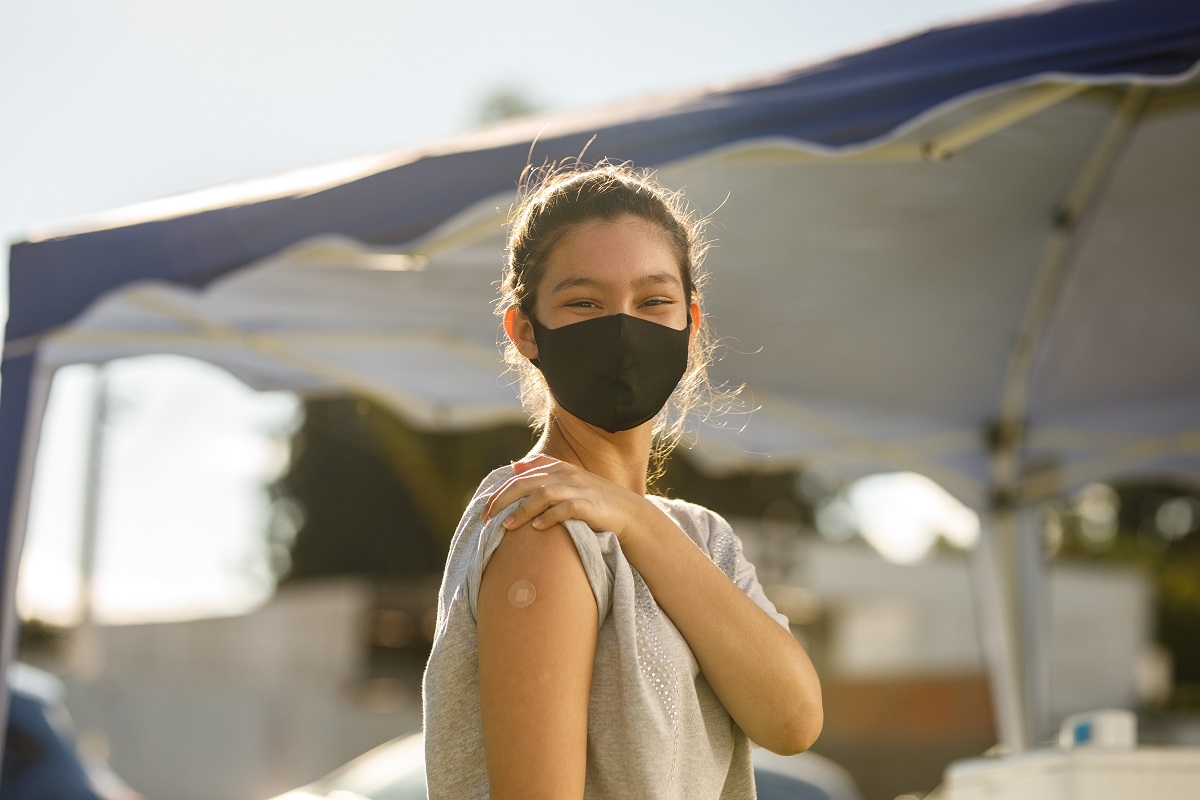
NYHealth's "Best of 2021" Annual Report
COVID-19 continued to affect New Yorkers’ lives in 2021, and NYHealth maintained our direct response to the pandemic. Our work included meeting the mental health needs of frontline workers, bolstering the efforts of local health departments, promoting vaccine equity, and creating access to telehealth for all. While addressing the pandemic, we also stayed focused on our long-term goals. We used a combination of grantmaking, convening, and policy analysis to advance healthy food, consumer empowerment, veterans’ health, and other emerging health issues. Explore our Best of 2021 to learn about some of our biggest wins.Supporting COVID-19 Relief and Recovery Efforts
Supporting COVID-19 Relief and Recovery Efforts
Our grantees worked to meet the evolving needs of some of the most vulnerable New Yorkers during the ongoing COVID-19 pandemic. Their dedication has helped communities stay safe, healthy, and informed over the course of 2021.
Mental Health Supports
Vibrant Emotional Health provided mental health and emotional support to frontline and essential workers and shared strategies with health care organizations to help their employees cope with the stress and trauma incurred by the pandemic. With NYHealth support, Vibrant had trained more than 225 individuals from 63 different organizations on how to identify and manage trauma; techniques for self-care, stress management, and organizational wellness; and how to support others who have experienced a disaster. All participants reported that the trainings were worthwhile and relevant and that they planned to use what they learned in their own work. Vibrant Emotional Health continued to be approached by organizations for trauma-informed trainings in 2021. It also shared insights on addressing mental health disparities in New York State during COVID-19 on a webinar in August 2021.
The Physician Affiliate Group of New York (PAGNY) has provided emotional and peer support and mental health first aid to frontline health care workers, often tapping into resources offered by Vibrant Emotional Health’s program. By mid-2021, it had held nearly a dozen online support group sessions with physicians on a range of topics, including dealing with grief about the death of co-workers; guilt about not being on the front lines; anger toward people not wearing masks; difficulty finding balance with all their responsibilities; and lack of self-care. PAGNY also conducted nearly 25 webinars on resilience for physicians. Finally, it offered wellness checks to frontline workers experiencing anxiety, depression, stress, and trouble sleeping, conducting 86 sessions overall.
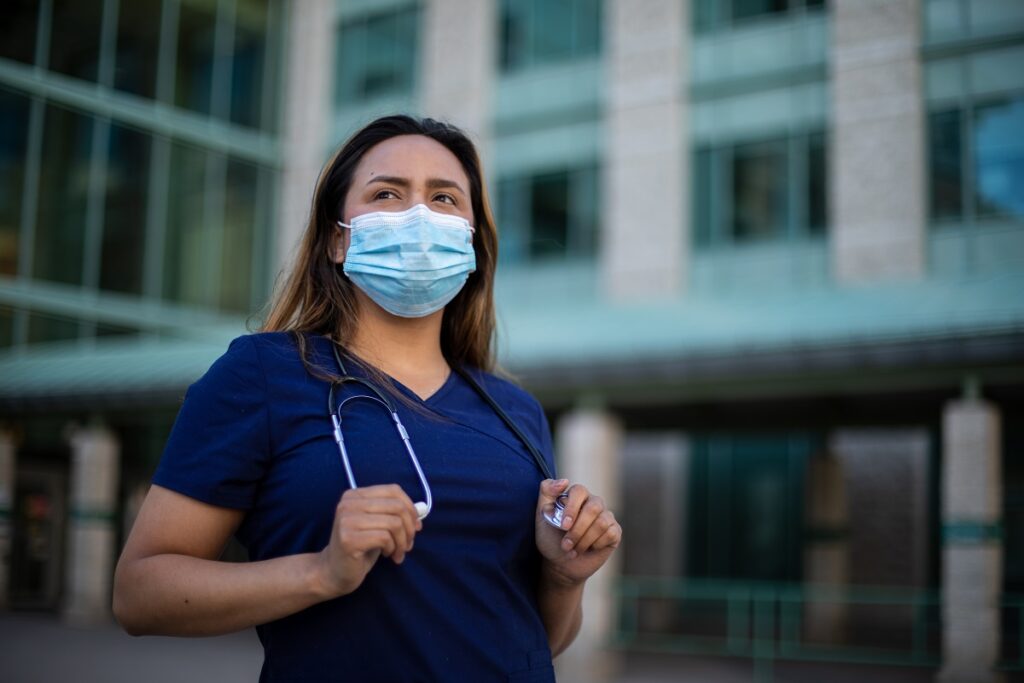
To help combat physician burnout as the pandemic stretched on, Bassett Medical Center rapidly expanded an existing physician peer support network in Central New York to cover all of New York State. It has trained nearly 200 physicians, advanced practice clinicians, resident trainees, nurses, behavioral health clinicians, administrators, respiratory therapists, and chaplains in peer-support techniques as well as deployed its program to 5 hospital-based health systems in the State. It subsequently provided supplemental trainings, expanding into psychological first aid and suicide awareness. Bassett Medical Center has continued to partner with other organizations to further spread its peer-support network and trainings across the State, including with the Medical Society of the State of New York, the American Nurses Association – New York, and the New York American College of Physicians; through these efforts, it expected to reach nearly 300 additional clinicians by the end of 2021.
Coordinated Behavioral Care (CBC) supported behavioral health workers across New York State on topics related to grief and loss, mindfulness, meditation, and anxieties regarding misinformation about the pandemic. It conducted statewide outreach to its members network and other partner agencies such as the New York State Office of Mental Health; the New York State Office of Addiction Services and Supports and its regional offices; and the New York State Council for Community Behavioral Healthcare. Over the course of 2021, CBC ran nearly 30 self-care trainings for more than 850 participants at 170 behavioral health agencies across the State.
Complementing our programmatic work to address the pandemic’s toll on New Yorkers’ mental health, we flexed our activist muscle to develop and share timely analyses of the scope of the problem and possible solutions. We submitted testimony to a New York City Council hearing on the City’s mental health emergency response during the COVID-19 pandemic. In June, we released a report with detailed findings on how the mental health of New Yorkers continues to suffer. We also produced a fact sheet to better understand the impact COVID-19 has had on the mental health of veterans in New York State and the unique challenges they have faced. These materials have been widely cited by journalists and policymakers.
Food Security
The COVID-19 pandemic upended New York’s food system and significantly increased food insecurity, exposing deep-seated inequities. NYHealth analyses of food scarcity in New York State—released in March and June—show that while food scarcity levels have eased a bit since the height of the pandemic, millions of New Yorkers still do not have access to affordable, nutritious food and stark racial and ethnic disparities in food security persist. We explored these findings more deeply on a webinar with Hunger Solutions in March.
When the New York City Department of Education’s Office of Food and Nutrition Services (OFNS) became one of the City’s two primary pandemic emergency food programs in March 2020, longstanding grantee partner Community Food Advocates (CFA) responded quickly to help improve citywide food distribution site operations. CFA worked with the City and other partners to maximize the impact of this emergency response. CFA’s searchable food hub map was used more than 84,000 times for finding the nearest food and halal/kosher meal sites. Its pandemic electronic food benefits (P-EBT) page was also used more than 84,000 times, with information on how to get food benefits to public school students who lost access to free school meals during the school closures. To get more eligible New Yorkers, particularly immigrant families, enrolled in P-EBT, CFA developed materials in a range of languages, including Spanish, Haitian Creole, French, Chinese, and Korean. The New York City Department of Education subsequently distributed more than 1.2 million P-EBT flyers in 13 languages at food hubs and community sites throughout the City. By the close of its project, CFA had made nearly 40 P-EBT presentations that reached more than 12,000 parents, faith leaders, and school administrators and staff, and more than 2,000 public school parents reached out to CFA directly requesting help with P-EBT. These efforts helped to ensure that 1.2 million daily meals were served to children and adults in New York City during the peak of the pandemic.
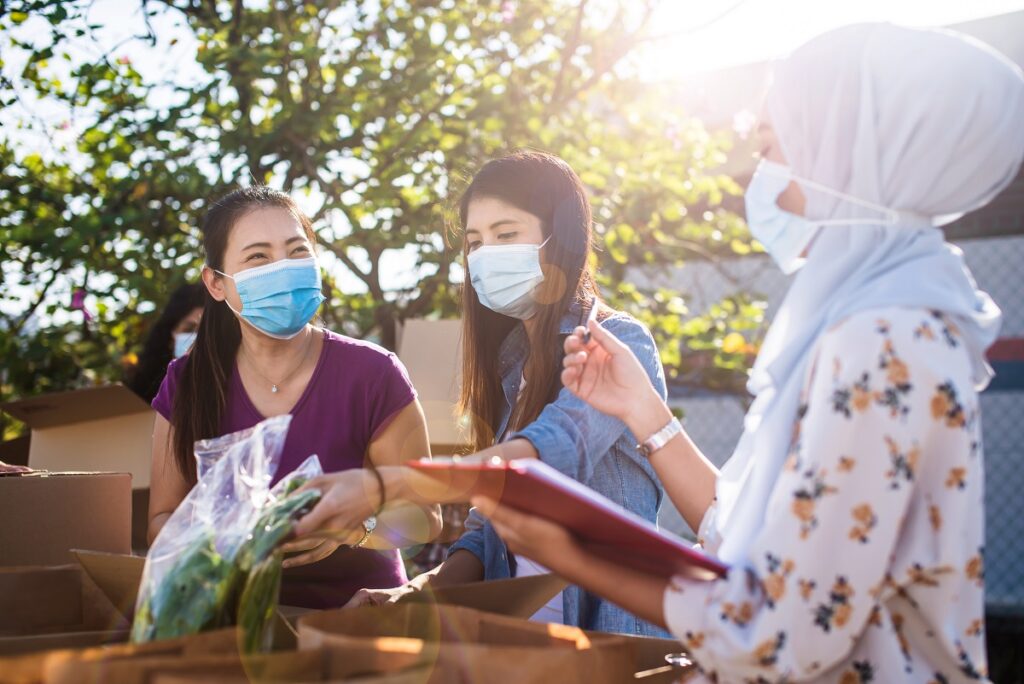
West Side Campaign Against Hunger (WSCAH) kept food pantry operations running to meet growing demand from New York City residents in need of healthy food during the pandemic. To keep people safe and socially distanced, it moved to street-side distributions and pre-packed boxes of food, in addition to promoting use of its existing app, Plentiful, a free reservation system for food pantry clients. Through its Mobile Market Program, WSCAH also made monthly no-contact food deliveries to 64 partner sites in all 5 boroughs, greatly expanding its normal scope of operations from 14 sites in northern Manhattan and the Bronx. As a result, food-insecure individuals with mobility issues or other health conditions that made them more vulnerable to COVID-19 didn’t have to take unnecessary travel risks and could access healthy food and fresh produce in their own neighborhoods. WSCAH also converted its social services office into a virtual call center to ensure continuity of services and benefits for its clients—expanding its programming to include COVID-19-specific relief for unemployment and rental/housing assistance. Demand for WSCAH’s services surged over the pandemic: by June 2021, it had distributed nearly 4.4 million pounds of healthy food and provided nearly 3.4 million meals, serving more than 77,000 people in need. And more than 4,500 families were able to gain access to other essential benefits, including SNAP and pandemic unemployment assistance.
With our support, Partnership for a Healthier America (PHA) worked with Foodlink, one of New York State’s largest and most innovative food banks, to get high-quality, fresh produce to Rochester residents in need. Through this partnership, more than 12,000 boxes of locally grown produce were distributed to low-income families and seniors. This project also expanded Foodlink’s Curbside Market model—a mobile farmers market that links low-income communities in the Rochester area with fresh fruits and vegetables—to respond to food system disruptions created by COVID-19. Foodlink tested a new model of offering pre-boxed fresh, affordable, local produce to customers. The fresh food boxes were a success and met with such high customer demand that PHA expanded its network of local growers/food distributors to pack and deliver more than 600 boxes on average each week to sites throughout Rochester, reaching 500–800 families each week. To further encourage healthy eating habits, Foodlink offered free printed recipes inside each box and through an app, based on what was included in that week’s food box.
Local Public Health Departments
In a state as large and diverse as New York, emergency response efforts to COVID-19 varied according to the unique needs of counties, especially those with rural and underserved populations. With our support, the New York State Association of County Health Officials (NYSACHO) provided technical assistance and resources to local health departments in 28 smaller counties with high rates of poverty, food insecurity, and/or residents living in rural areas. These local health departments responded to a range of issues and needs facing residents, especially low-income families, seniors, and non-English speakers. For example, Livingston County expanded drive-through COVID-19 testing and vaccination sites as well as purchased local print and radio ads to spread the word about the local vaccination plan and educate residents about vaccines. Tens of thousands of residents were reached through the county’s weekly Pennysaver circular and by more than 1,500 spots airing on the local radio stations and on livestreams.
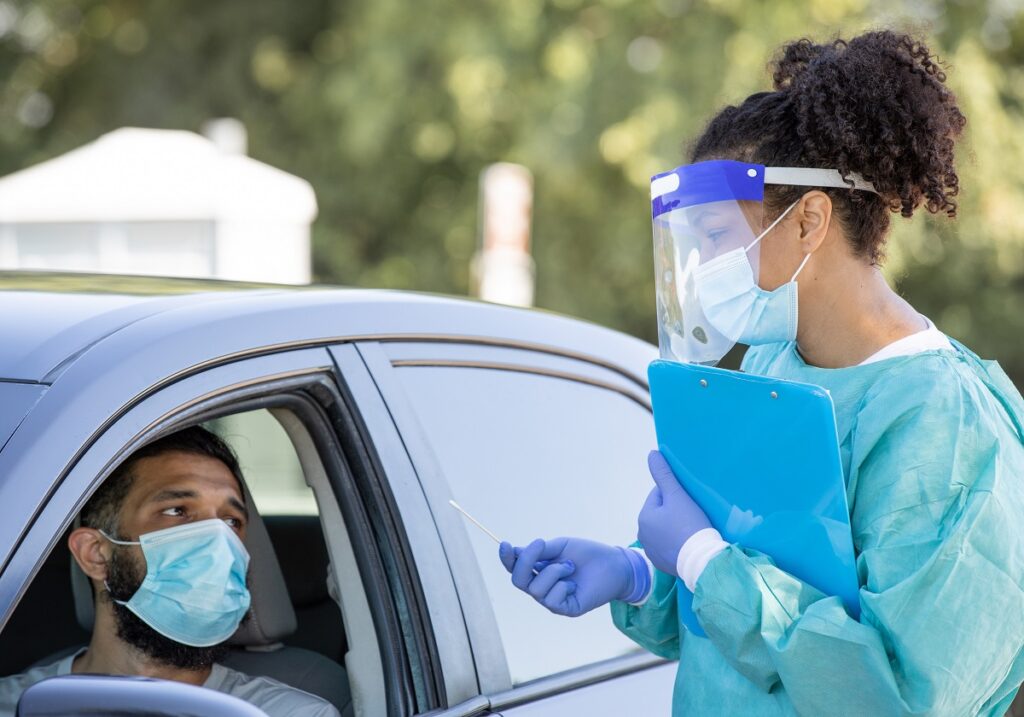
Columbia County established two-person testing teams from its health department and EMS department to visit group homes, migrant labor camps, senior centers, and affordable housing locations, where a lack of transportation and other challenges posed barriers to access at conventional COVID testing sites. The teams conducted follow-up education, contract-tracing, and surveillance as needed. Essex County worked in eight school districts to provide mobile meal carts offering fresh, healthy meals and snacks to food-insecure residents and children, whereas Lewis County provided personal protective equipment for nurses to allow them to safely test homebound residents for COVID-19. And in Tioga County, an education campaign on COVID prevention practices (e.g., social distancing, mask wearing, hygiene, testing, contact-tracing) was widely publicized on billboards and in print ads. Its local health department also provided 100 backpacks of school supplies for low-income families, including child-sized masks, hand sanitizer, wipes, and classroom supplies like crayons and pencils to reduce communal sharing of these items.
Supporting Healthy Food and Healthy Lives
Supporting Healthy Food and Healthy Lives
In 2021, we launched NYHealth’s newest priority area, Healthy Food, Healthy Lives. Through an inaugural Request for Proposals (RFP), we are supporting nine projects to connect New Yorkers with the food they need to thrive. These projects include a collaborative effort to improve farm-to-school programs in New York State; bringing better grocery options to Ontario and Seneca counties for SNAP recipients; and piloting a fruit and vegetable prescription delivery program to low-income families with children in New York City.
We also testified to the State legislature about improving food security in New York State and about the inequities of the food system, citing our analysis on food insecurity during the pandemic.
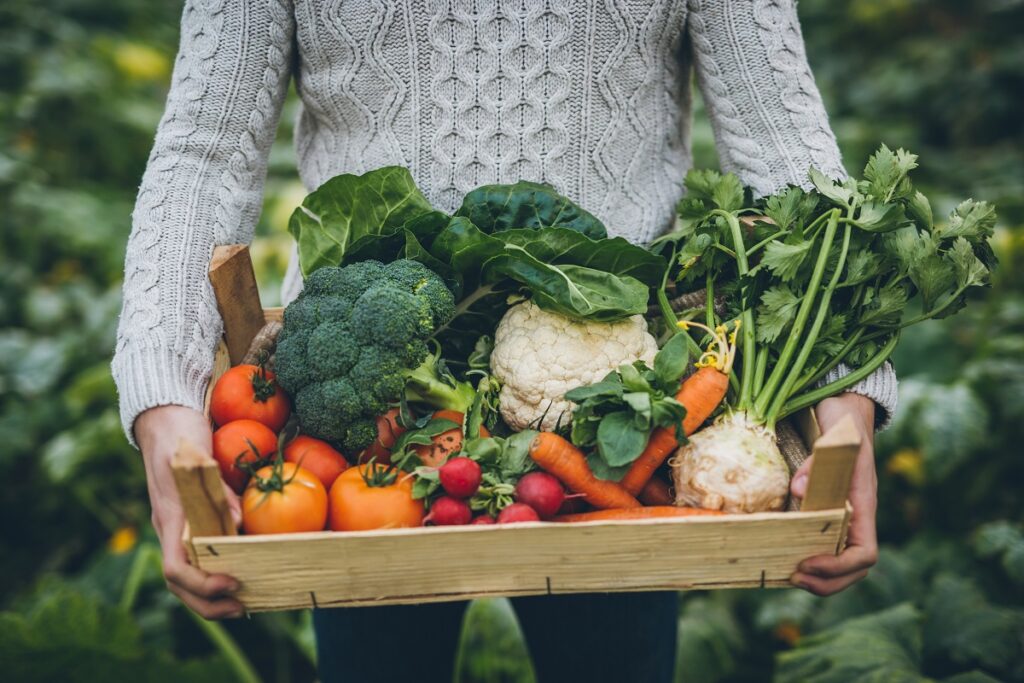
At the start of the pandemic, we gave a grant to AdkAction to partner with The Hub on the Hill to bring emergency food packages to food-insecure residents in the North Country. Building on the success of that project, AdkAction evolved its program into a sustainable food security model: Fair Food Pricing. This model allows residents to receive a discount or use SNAP to purchase Farm Fresh Packages, which include fresh, whole food items such as milk, eggs, and meat, in addition to fruits and vegetables. To expand access even further, we made another grant to AdkAction to scale its Fair Food Pricing model, as well as create an online marketplace where residents in Clinton, Essex, and Franklin counties can purchase groceries for delivery. AdkAction also helped The Hub apply to become an eligible SNAP vendor and a Double Up Food Bucks participating retailer. Now, customers can shop online or in person, allowing homebound residents and rural households to have food delivered to their homes. AdkAction is also working to provide technical assistance to help other small vendors across the State apply to become online SNAP vendors and streamline the process. Food package ingredients are sourced from local farms when possible, with 28 farms with 146 farmworkers supported during the grant period. In total, AdkAction was able to provide 551 food packages or 8,265 meals; 187 of these were free Emergency Food Packages and 364 were subsidized Farm Fresh Packages.
Meeting the Needs of Veterans
Meeting the Needs of Veterans
This year, New York State enacted a law to create universal access to Veterans Treatment Courts (VTCs) for all veterans who need one—a tremendous win for New York State’s veterans and for our work in contributing to this policy change. Starting more than a decade ago, we have partnered with key players to replicate VTCs across New York State. To follow up on this work, we’ll be partnering with Justice for Vets to ensure sound implementation now that the policy is in place.
We also testified before a New York State Assembly hearing to share ideas for strengthening New York State’s Division of Veterans’ Services (DVS), including supporting its elevation to department status. With a new DVS director now in place and momentum for improvements, we hope our recommendations will lead to improvements that ensure all New York veterans receive the services and care they need.
Suicide Prevention and Mental Health Services
Our second annual virtual conference on veterans’ health focused on veteran suicide prevention efforts and the impact of The Governor’s Challenge to Prevent Veteran Suicide in New York State. Speakers discussed best practices for discussing suicide with loved ones; highlighted services aimed at identifying and addressing the needs of high-risk populations; and identified other innovative approaches to preventing veteran suicide.
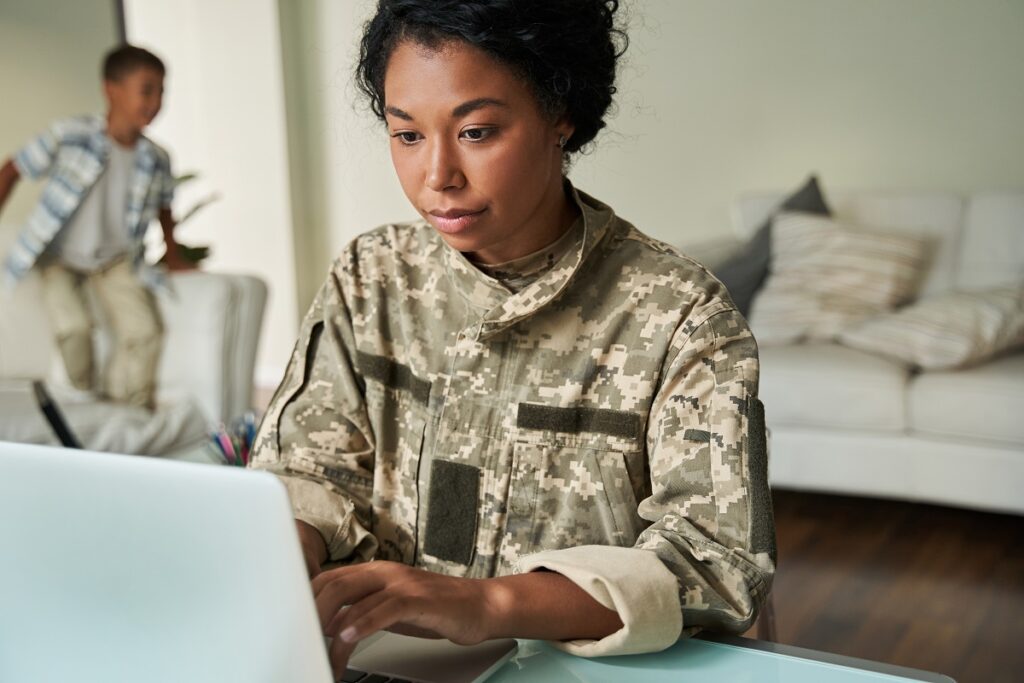
We continued to work with Stop Soldier Suicide to expand its evidence-based suicide prevention program to veterans throughout New York City. More than 140 veterans at risk of suicide have been connected to high-quality, specialized care since the beginning of this project. We also supported the Military Family Center at NYU Langone Health (MFC) to continue providing free telemental health services to veterans in hard-to-reach, under-resourced areas of New York State, resulting in nearly three times the number of veterans outside of New York City accessing mental health care services from MFC compared with the previous year. MFC has provided telemental health sessions to more than 350 newly enrolled veterans and family members.
Similarly, Team Red, White & Blue and Iraq and Afghanistan Veterans of America worked to increase veterans’ access to COVID-19 vaccines by expanding their outreach efforts across New York State. These efforts have had hundreds of thousands of online impressions, driven more than 10,000 veterans to designated websites with additional information about the COVID-19 vaccine, and led to more than 2,000 referrals to community-based resources—including emergency financial aid, housing assistance, and mental health services—that can help reduce suicide risk.
Rebalancing the Health Care System for Patients
Rebalancing the Health Care System for Patients
Helping patients become active participants in their own care is a cornerstone of our work to empower health care consumers. In 2021, we selected five organizations for grant awards totaling $1 million to engage patients of color as partners in their health care at both the systems and individual levels—our first grants program specifically focused on racial health equity. While all patients should be valued as partners, patients of color can face unique obstacles, including racism, bias, mistrust, and gaps in communication between patients and physicians. This cohort of grantees is developing projects with statewide impact that give patients of color a meaningful role in their health care and work toward a more equitable health care system. For example, the Research Foundation of Mental Hygiene will pilot an online model to improve mental health treatment for young people of color with serious mental illness. Northern Manhattan Perinatal Partnership, in partnership with New York-Presbyterian Hospital, is developing a sustainable model for maternal and child telehealth services focused on women of color, who are disproportionately affected by adverse pregnancy outcomes. To help other health care organizations develop strategies for better engaging communities color, the Center for Health Care Strategies is collaborating with 7 health care systems that are seeking to address health disparities and advance their health equity agendas through effective patient engagement strategies that will reach more than 6.400 patients collectively.
Since 2017, we’ve supported efforts to help spread shared visit notes (often referred to as “open notes”) throughout New York State, helping hospital systems and federally qualified health centers and other nonhospital settings across the State implement open notes. To capitalize on a new federal mandate requiring health care systems to share clinical notes with patients, we released a Request for Proposals, “From Good to Great: Improving Access to and Use of Patient Visit Notes.” We will provide hospitals throughout New York State with funding and technical assistance not only to comply with the new federal mandate but also to engage more meaningfully with patients. Grant recipients will be announced in early 2022. We also held a webinar with OpenNotes and leading New York State health systems and patients who have successfully adopted and used open notes to share best practices and lessons learned.
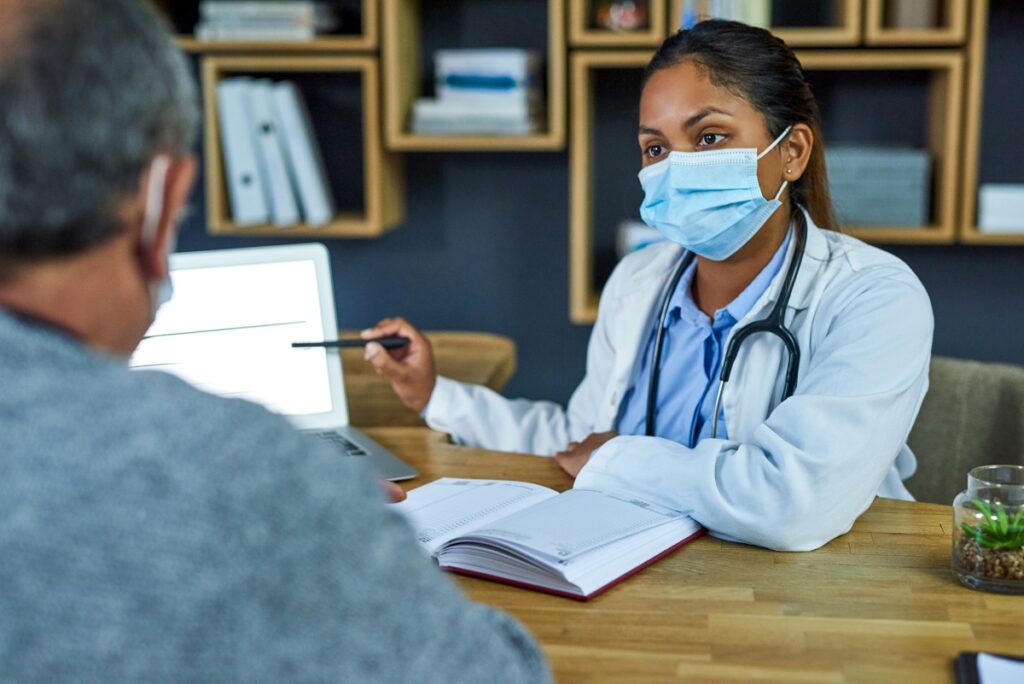
Ensuring convenient access to high-quality, affordable health care services is another key component of consumer empowerment. Despite a rapid expansion of telehealth over the course of the pandemic, services remain out of reach for rural and low-income populations and people of color. To ensure that the benefits of telehealth are shared equitably, we supported two complementary initiatives. NYC Health + Hospitals Corporation (H+H), which serves 1.3 million New Yorkers each year, is designing engagement strategies for patients that reflect their needs, preferences, and digital and health literacy levels. It is implementing a new telehealth video platform with added language interpretation features and other patient-friendly functionality as a well as hiring telehealth patient navigators to help patients use it. AIRnyc has launched a partnership with Sun River Health, a network of 43 community health centers, to expand a pilot that uses community health workers (CHWs) to assist patients in navigating telehealth services. CHWs are helping more than 1,000 patients access their health information, use telehealth online tools, and communicate with their doctors. They will also test a care coordination model that combines virtual and in-person care. Both projects are setting the stage for wider statewide efforts to promote the effective, equitable implementation of telehealth for low-income and otherwise marginalized patients. AIRnyc shared an early look at strategies to make telehealth services more accessible and equitable for New Yorkers on a webinar in July.

Whether for telehealth services or any other type of care, patients have a right to affordable care and to know upfront what they can expect to pay for it. Over the years, NYHealth and our grantees have championed an end to surprise bills; in late 2021, the New York State Department of Financial Services issued a proposed rule to protect consumers from surprise bills if they are provided with incorrect information about whether a health care provider is in network.
We have also examined unnecessary variation in health care prices and its impact on patients. Our latest analysis found that the price of childbirth in New York City varies substantially. Higher prices do not always mean better quality of care; yet, the median price for vaginal deliveries in Brooklyn was nearly $13,000 whereas the median price in the Bronx was nearly $17,000. In testimony before a New York City Council hearing in October 2021, we shared findings from this work and an earlier analysis of hospital price variation across New York State.
Forging Strong Partnerships and Collaborations
Forging Strong Partnerships and Collaborations
A popular saying tells us: If you want to go fast, go alone. If you want to go far, go together. We do our best work when we collaborate. Partnerships with other funders, government entities, and grantees can lead to big, bold, and enduring impact.
In fall 2021, the U.S. Department of Agriculture notified Field & Fork Network—which has been working to expand the Double Up Food Bucks nutrition incentive program—that it was eligible for almost $800,000 in supplemental funding if it could quickly secure dollar-for-dollar private matching funds. NYHealth made our own grant and tapped our networks to help raise the match. A coalition of funders including the Ralph E. Ogden Foundation, the Sheldon Foundation, Community Foundations of the Hudson Valley, Chautauqua Region Community Foundation, and the Community Foundation of Orange and Sullivan—as well as in-kind support from farmers markets throughout the State—resulted in a total of $1.6 million to help feed hungry New Yorkers. And it all came together in about 48 hours (an example of going both far and fast!).
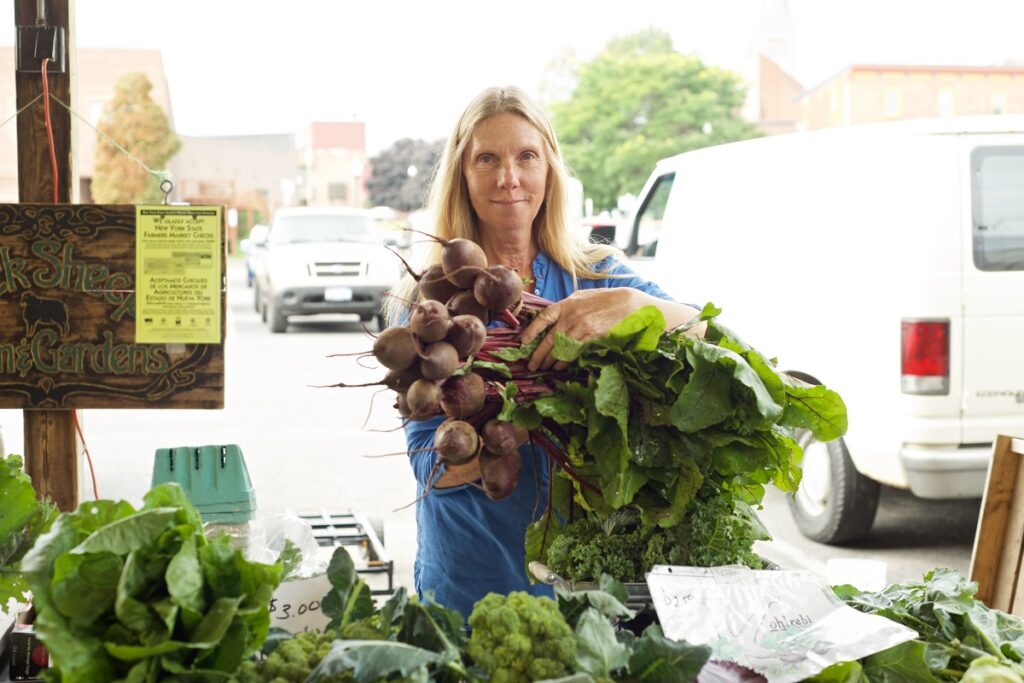
Similarly, we joined with the New York State Department of Health, Schmidt Futures, Greater Rochester Health Foundation, and the Health Foundation for Western & Central New York to finance the New York Telehealth Capital Program. This partnership will help ensure equitable access to telehealth services at communal access facilities (like libraries, firehouses, pharmacies, and homeless shelters) that are convenient for patients.
Partnerships have also been critical to a range of projects to increase COVID-19 vaccination outreach, education, and administration. For example, we awarded the Fund for Public Health in New York City a grant to support local partners in vaccination outreach, with a focus on communities of color. Through this grant, 33 community- and faith-based organizations are working with the New York City Department of Health and Mental Hygiene to provide messaging, engage community members, and offer one-on-one vaccine navigation assistance to residents in 20 of the City’s highest-need neighborhoods with the lowest vaccination rates. Working together, they will coordinate and complement each other’s efforts to increase vaccination rates in communities disproportionately affected by COVID-19.